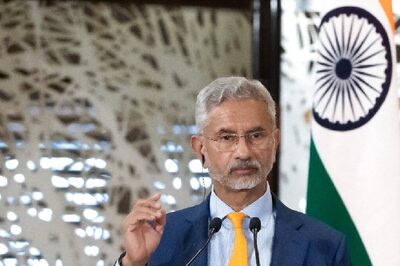
views
WASHINGTON: U.S. consumer spending increased more than expected in July, strengthening expectations for a sharp rebound in economic growth in the third quarter, though momentum is likely to ebb as the COVID-19 pandemic lingers and fiscal stimulus dries up.
The report from the Commerce Department on Friday also showed a rise in personal income after two straight monthly declines, while monthly inflation pushed higher. The Federal Reserve on Thursday rolled out a sweeping rewrite of its mandate, putting new weight on the U.S. labor market and less on worries about too-high inflation.
Consumer spending, which accounts for more than two-thirds of U.S. economic activity, rose 1.9% last month, after jumping 6.2% in June. Economists polled by Reuters had forecast consumer spending gaining 1.5% in July.
Consumers boosted spending on goods like new motor vehicles. Spending on goods has rebounded above pre-pandemic levels. They also lifted spending on healthcare, dining out and on hotel and motel accommodation. Still, outlays on services are below February levels as consumers remain wary of exposure to the virus.
That is a bad omen for the services-based economy, which slipped into recession in February. Though new COVID-19 infections have subsided after a broad resurgence through the summer, many hot spots remain, especially at college campuses that have reopened for in-person learning.
The economy suffered its deepest contraction in at least 73 years in the second quarter, with consumer spending at the forefront of the decline in gross domestic product.
While economists are anticipating a sharp rebound in GDP in the third quarter, led by consumer spending, they are cutting estimates for the fourth quarter.
RETAIL INVENTORIES REBOUND
Prospects for third-quarter GDP growth were boosted by another report from the Commerce Department on Friday showing a rebound in retail inventories in July. That could offset a potential drag from rising imports, which led to a widening in the goods trade deficit last month.
U.S. stocks were trading higher as the prospect of super low interest rates for a prolonged period spurred risk appetite. The dollar fell against a basket of currencies. U.S. Treasury prices rose.
Americans in low-wage jobs have borne the brunt of the economic downturn. A $600 weekly unemployment supplement from the government expired on July 31. Though President Donald Trump extended the supplement, the payout was cut to $300 per week and funding for the program is expected to be depleted by September.
A few states are offering the extra unemployment benefit. Economists estimate the loss of the $600 could cut $50 billion from retail sales in August. At least 27 million people are on unemployment benefits.
Last month, income rose 0.4% amid an increase in wages as more businesses reopened, offsetting a decrease in government transfer payments. Income fell 1.0% in June. Wages gained 1.3% after increasing 2.2% in June.
With spending heavily tilted towards goods, monthly inflation increased further in July. The personal consumption expenditures (PCE) price index rose 0.3% after surging 0.5% in June. In the 12 months through July the PCE price index increased 1.0% after gaining 0.9% in June.
Prices excluding the volatile food and energy components rose 0.3%, matching June’s advance. In the 12 months through July, the so-called core PCE price index climbed 1.3% after increasing 1.1% in June. The core PCE index is the preferred inflation measure for the Fed’s 2% target, which is now a flexible average.
Disclaimer: This post has been auto-published from an agency feed without any modifications to the text and has not been reviewed by an editor




















Comments
0 comment